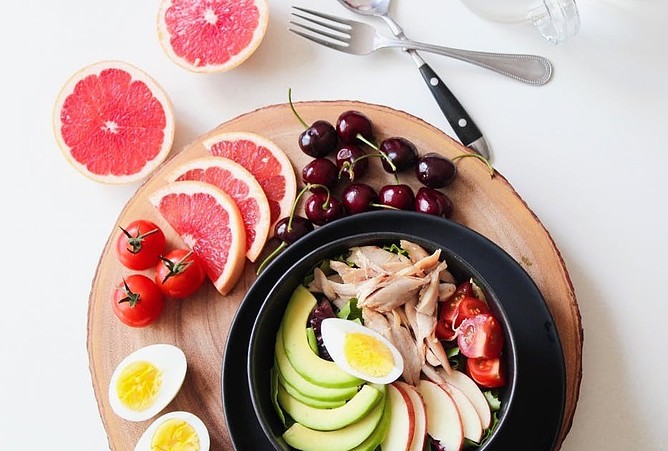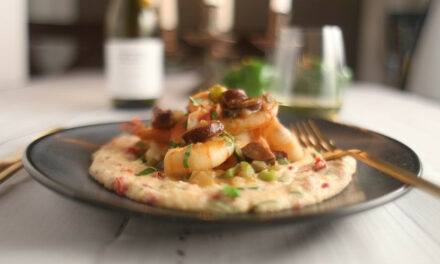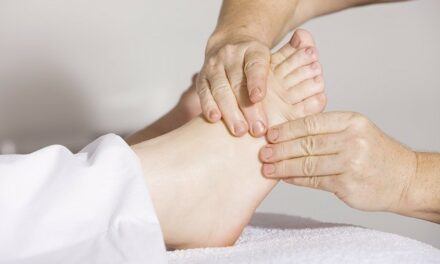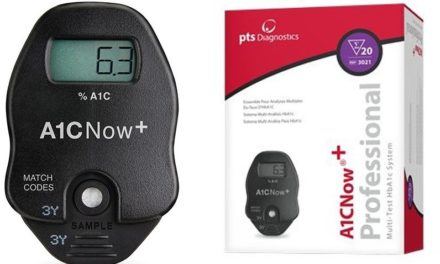In this article, we will be discussing all aspects of reactive hypoglycemia, mainly focusing on eating tips, diet and food list you should stick within to avoid unnecessary hypo episodes.
Before visiting the reactive hypoglycemia diet and food list, let’s try to define what exactly reactive hypoglycemia is.
Tip: If you have missed, here is the article about nighttime hypoglycemia with some valuable tips on preventing it.
What is reactive hypoglycemia?
Reactive hypoglycemia is a medical term to explain the low blood sugar (hypoglycemia) that occurs after eating. It usually happens because blood glucose levels become extremely low once the meal is consumed due to the stimulation the food just entered your body caused.
Reactive hypoglycemia is also considered and called as postprandial hypoglycemia. Postpardinal refers to ‘during or soon after dinner or lunch’.
Postprandial hypoglycemia is a state when the recurrent drops in the blood sugar level are common. Usually, it happens when the four hours have passed after food consumption. Those people that are overweight or even the ones who have undergone gastric bypass surgery face the risk of acquiring postprandial hypoglycemia from reactive hypoglycemia.
Is reactive hypoglycemia a sign of diabetes?
It is a fact that reactive hypoglycemia can occur among people who have diabetes (both diabetes mellitus and diabetes insipidus) and even those who do not have diabetes as well.
In the case of people who do not have diabetes, hypoglycemia can take place because their bodies produce too much insulin once the meal is consumed. It creates a situation when there is a major drop in the levels of blood sugar, leading to the condition reactive hypoglycemia.
Another important fact is that reactive hypoglycemia can be an early sign of diabetes for many people who are not ‘formally’ diagnosed with diabetes or prediabetes.
Tip: Always watch for early signs of diabetes-specific to men, women and children.
The difference of reactive hypoglycemia from fasting hypoglycemia
There are indeed major differences between reactive hypoglycemia and fasting hypoglycemia.
Reactive hypoglycemia is a medical condition that is related to low levels of blood sugar which happens once a meal is consumed. The duration between the meal and the episode is usually four hours.
Though fasting hypoglycemia is mainly related to another disease (too), in this case, the blood sugar drops as a result of not consuming any food for few hours or as a result of missing a meal.
You must understand that there are some important factors related to reactive hypoglycemia. Many people who are diagnosed with reactive hypoglycemia, struggle to determine the actual cause of it. Though, the identification of the symptoms is necessary as it may have a relation with your food habits and some random food you have just have eaten.
Another important aspect of reactive hypoglycemia would be determining the timings of food when it moved into the digestive system. This variation is a key element.
Some of the other factors that may contribute to reactive hypoglycemia include alcohol intake, even certain surgical procedures (for example, gastric bypass or ulcer surgery) you recently underwent. Not to forget, some metabolic disorders and some tumors as well can cause reactive hypos.
Normally, a medical evaluation is inevitable to assist in identifying the symptoms that have occurred due to low blood sugar and accordingly to identify any possible causes. This process is proven vital to determine the health state of the patient and whether the symptoms can be improved, once the normal blood sugar levels return.
Additional testing can even become quite necessary to investigate more severe symptoms associated with the hypoglycemia.
Tip: Do you feel dizzy or lightheaded often? This can be a sign of low blood sugar too.
Tip: We covered the Diabetic Gastroparesis Food List
too.
Fundamentals of reactive hypoglycemia diet planning
The fundamentals of reactive hypoglycemia diet planning have immense significance for the patients with this medical condition. Diet planning is indeed a vital aspect that can provide relief to the patients to increase their hopes of recovering from this disease.
It is a general fact that everybody needs to understand that Reactive hypoglycemia is a disease state which does not require medical treatment. Though, at the same time, it is necessary to understand that any kind of underlying medical condition would require treatment.
One of the major factors in this regard is the dietary changes that can prove essential in lessening the symptoms. Diet planning is essential for the patients, but certain fundamentals matters before any significant action can be taken in this regard.
The first step is studying all the requirements of the patients and then preparing the diet plan accordingly. The medical experts need to know what food content is suitable for the patients and also highlight those nutritional content that cannot prove valuable for the patients.
It is a fact which is not at all surprising that the symptoms associated with reactive hypoglycemia can surely be moderated by exercising certain kinds of steps to keep levels of blood glucose at a reasonable range.
During the phase of diet planning, it is firstly much important to follow “Rule 15“.
What is Rule 15?

Step 1
Rule 15 suggest consuming 15 grams of carbohydrates that are fast-acting, and then to wait at least for 15 minutes.
During this particular point, the symptoms must subside.
In case, the symptoms won’t go, then the blood sugar needs to be checked, and you should repeat the cycle until normal levels have been achieved.
Step 2
The next step is to eat a small snack or meal which needs to have two food contents consisting of protein and carbohydrates when the hypoglycemic symptoms are cleared flowing the above mentioned Step 1.
This would turn out to be an essential aspect in the prevention of another spike in blood sugar levels, and it would also prevent dropping your sugar level on a subsequent basis.
Reactive Hypoglycemia diet planning checklist
Diet planning is undoubtedly a vital and a need for patients fighting with reactive hypoglycemia. Though, there are certain conditions in the diet planning that are necessary to meet to ensure the best health results.
Those conditions are:
1. A meal must be consumed after every three to four hours
This is the core aspect of reactive hypoglycemia diet planning. It is not just the food intake that matters but even the duration also has immense significance.
The patients experiencing reactive hypoglycemia can indeed have normal blood sugar levels once they work out and take care of the maximum length of intervals between their meals that they can afford to have.
2. Every time every meal must contain elements of fat, fiber, and protein
This is an important aspect with regard to food as it can have a positive impact on your overall diet planning. The point is all fat, protein, and fiber elements need to be a part of your meals.
This practice would make the person fighting with reactive hypoglycemia much better, and they would feel quite healthy as a result. Your blood sugar levels would also improve considerably, thus turning out to be a positive aspect of the whole.
Though you must take responsibility for consistency of this practice, and negligence is unacceptable as that would be an invitation for another episode.
In this scenario only, the care and your discipline have their benefits, which can prove fruitful for you in the short run and long run as well.
3. Selection of slow digestive carbs is important
The inclusion of carbohydrates in the diet is vital to maintain healthy levels of blood sugar. Not only that, but this is also the reason why the selection of the right carbs carries immense value for the patients.
All the carbs that have a high glycemic index would have a higher digestion rate in comparison with the slow carbs. In such a scenario, the slow and low carbs are more important for you and considered to be best.
The biggest advantage of those foods with a low glycemic index is that they tend to control the levels of blood sugar well, which is important for patients with reactive hypoglycemia.
On the other hand, the foods that are at the higher GI index would likely to cause a major sugar drop very soon after eating. Therefore, the significance of the slow digestive carbs must be remembered and practiced – it is proven beneficial!
4. The level of carbs must be limited to 30 grams per meal
Although I recommended low GI carbs above, it is a fact that not all the people who are with hypoglycemia should follow a low-carb diet, but some must keep carbs level at consistent levels and in moderation as that is proved to be beneficial for reactive hypoglycemia patients.
Based on one particular study, the consumption of meals which are small, for at least six times a day, having about 30 grams of carbohydrates can be quite effective in the reduction of hypoglycemic symptoms.
The point is that the consumption of carbohydrates on consistent levels that too after a few hours daily can keep the levels of blood sugar at a steady rate. The things can further improve when the foods are fibre-rich and have a low glycemic index.
5. You should not leave home before eating a snack
The most sensible action of patients with reactive hypoglycemia is to carry a raw almonds bag with themselves. This would not lead them to starve with low blood sugar if they feel like going ‘hypo’.
Having snacks along is the best thing to control the levels of blood sugar or preventing it from going low. It can also provide a major boost before performing any physical activity, such as going to the gym or even attending an intense meeting.
You must avoid hunger at all costs because it is proved dangerous for reactive hypoglycemia. Having just anything maybe not ideal, but it can be better than starving.
6. As soon as any physical activity finishes, it is important to eat something
As many people learn during their college days, once a workout is finished, then the next step must be to eat something right away to avoid a drop in the blood sugar levels.
It is recognized as a time when it is even considered beneficial in consuming fast-burning cabs that include potatoes or white rice. These carbs are quite useful for the patients suffering from reactive hypoglycemia as these can keep up the blood sugar levels at an optimum level.
Pairing these carbs with some proteins can even lead to much better results. This is vital for rebuilding muscles and increase muscle elasticity of any person.
The liquids are quite useful than solid foods because they can be absorbed much more quickly. The combination of banana with a protein shake is an excellent idea in this regard. After two hours, your food intake can follow-up with the consumption of a proper meal.
Tip: Here is a list of diabetes-friendly smoothies you can try.
Tip: Follow these steps when you travel with diabetes and adjusting to high temperatures.
Reactive hypoglycemia food list
Below 2 steps related to reactive hypoglycemia, food list are important along with the food list itself.
The steps are going to be:
STEP 1
You should put every effort to eat balanced meals and eat small portion snacks through the entire day (they must come every 3 hours)
- There are several ranges of healthy foods that you can be easily chosen from the list of three food groups during every meal, and two can be chosen while consuming with a snack.
Combination 1 – There is a non-sugary meal (it mainly consists of Fruits, Vegetables, Alternative food along with the Meat) and then there is cornbread (labeled under the category of grain products).
- Another combination then comprises milk glass (milk with other alternatives). This range would cover all the food groups.
- All those foods and drinks having high sugar quantity must be limited, that includes doughnuts, frozen desserts, and fruit drinks that are flavored along with soft drinks.
- You should avoid more than 3-hour intervals between meals.
STEP 2
All those foods must be chosen that needs to have a high quantity of soluble fiber. Secondly, starchy foods which have low glycemic index are recommended during each meal.
You need to keep a record of food types you have eaten, which can in return assist you in understanding the best-personalized food list for you to help better to keep the blood glucose levels stable.
The foods that have a high quantity of soluble fibre consists of:
- Barley, oatmeal and oat bran
- Lentils, dried peas and also beans
- Fruits and vegetables (ideally, you should consume them with their skins)
It is vital and has a high significance when you consume at least 5-10 grams of soluble fiber on a daily basis.
The starchy foods which are quite low in the glycemic index consist of:
- Barley, parboiled rice/converted, bulgur and oats
- The bread that is produced with the help of stone ground flour. It also has an element of heavy mixed grain which includes the food content having the name of pumpernickel bread.
- Then there are also lentils, dried beans, and even peas.
There are many vegetables along with fruits and even low-fat milk products which have a reasonable level or quite low glycemic index, and they can be a part of every meal that people consume.
Who can help you to customize the reactive hypoglycemia food list?
The patients must refer to the registered dietitian to seek help with choosing the right food with a low glycemic index in their right amounts. Every meal plan must satisfy this condition.
The meals need to be selected and prepared in coordination with the medical expert’s recommendations considering the patient’s overall health challenges. Dietitians are the go-to expert who has the best knowledge about the food requirements based on different diseases the patient may be suffering from. Their advice is immensely important to the patient.
The food list that the person consumes has high significance for the patients suffering from reactive hypoglycemia, and you should not ignore the aspects of food requirements at all cost.
Every effort must be taken to enhance the meal quality in the right manner that can prove to be vital for the patients in both the short-run and long-run.
The food lists for patients suffering from reactive hypoglycemia must contain sincerity elements. This can support the right treatment in the form of providing the right food quantity (and quality) to the patient, thus ensuring proper care of them through nutrition.
Tip: You have to take extra steps if you have diabetes during pregnancy but by all means be mindful about myths about diabetes.
Foods to avoid if you have reactive hypoglycemia
It is important to understand that there is no medical treatment specifically for the condition reactive hypoglycemia. Of course, if you have Type 1 or Types 2 diabetes,
this needs to managed using treatment for diabetes.
However, in the case of food and nutrition, certain foods must be avoided to minimize the chances of recurring the symptoms of reactive hypoglycemia.
Here are the necessary steps in this regard.
-
Limiting the food which has high sugar content or quantity
It is necessary to avoid all those foods which are sweet that include items such as honey, jam, desserts and some of the sweets itself as well.
However, the patients with well managed non-severe diabetes may consume sweets on an occasional basis but not regularly as noted in the Diabetes Food Myths article.
-
Sugary drinks must be avoided at all costs
Fizzy drinks are considered as harmful for many reactive hypoglycemia patients. Even the other kinds of beverages such as squash or fruit juice, can fit into the same bucket.
Healthy drinks are mostly preferred by many people these days not only because they do not have high sugar content, but also, they contain important nutritional contents too.
-
Avoid alcoholic beverages
Alcoholic drinks must be avoided because they can create a negative impact on the reactive hypoglycemia condition. Even if you want to drink some alcohol causally, then it should be in a low quantity, so your actions do not produce an unwanted blood glucose effect.
The mixing of alcohol with soft drinks must be avoided altogether.
-
Caffeine also needs to be avoided as it can make symptoms worse
All efforts must be taken to avoid caffeine included food such as coffee, chocolates, cola and energy drinks.
You can consider the options of decaffeinated tea or coffee instead. And, can use a sweetener instead of sugar.
All the temptations for consuming caffeine must be avoided entirely, and it is for the betterment of avoiding reactive hypoglycemia.
Conclusion
You may agree that this topic has immense value because it is crucial to have a detailed discussion on the reactive hypoglycemia diet and food list. Such discussions enable us to gather all information about the topic, which is essential in terms of understanding its overall significance from a medical and practical point of views.
Tip: You should consider the things in the linked article before taking Garlic or Krill Oil for lower blood pressure.
Tip: Essential oils could help with diabetes.
Tip: Stick with a one of the top 10 Best Glucose Monitoring Devices for Diabetes but you must check A1c levels too.






